The Influence of Process Parameters and Build Orientation on the Creep Behaviour of a Laser Powder Bed Fused Ni-based Superalloy for Aerospace Applications
Abstract
1. Introduction
2. Materials and Methods
2.1. Material
2.2. Small Punch Creep Testing
3. Results and Discussion
4. Conclusions
Author Contributions
Funding
Conflicts of Interest
References
- Pollock, T.M.; Tin, S. Nickel-Based Superalloys for Advanced Turbine Engines: Chemistry, Microstructure, and Properties. J. Propuls. Power 2006, 22, 361–374. [Google Scholar] [CrossRef]
- Royce, R. The Jet Engine; Rolls-Royce plc: Derby, UK, 2005. [Google Scholar]
- Reed, R.C. The Superalloys Fundamentals and Applications; Cambridge University Press: Cambridge, UK, 2006. [Google Scholar]
- Frazier, W.E. Metal Additive Manufacturing: A Review. J. Mater. Eng. Perform. 2014, 23, 1917–1928. [Google Scholar] [CrossRef]
- DebRoy, T.; Wei, H.L.; Zuback, J.S.; Mukherjee, T.; Elmer, J.W.; Milewski, J.O.; Breese, A.M.; Wilson-Heid, A.; De, A.; Zhang, W. Additive manufacturing of metallic components—Process, structure and properties. Prog. Mater. Sci. 2018, 92, 112–224. [Google Scholar] [CrossRef]
- Thomas, M.; Baxter, G.J.; Todd, I. Normalised model-based processing diagrams for additive layer manufacture of engineering alloys. Acta Mater. 2016, 108, 26–35. [Google Scholar] [CrossRef]
- Carter, L.N.; Essa, K.; Attallah, M. Optimisation of Selective Laser Melting for a High Temperature Ni-Superalloy. Rapid Prototyp. J. 2015, 21, 1–8. [Google Scholar] [CrossRef]
- Lewandowski, J.J.; Seifi, M. Metal Additive Manufacturing: A Review of Mechanical Properties. Annu. Rev. Mater. Res. 2016, 46, 151–186. [Google Scholar] [CrossRef]
- Slotwinski, J.A.; Cooke, A.L.; Moylan, S.P. Mechanical Properties Testing for Metal Parts Made via Additive Manufacturing: A Review of the State of the Art of Mechanical Property Testing; National Institute of Standards and Technology: Gaithersburg, MD, USA, 2012. [Google Scholar]
- Hilal, H.; Lancaster, R.J.; Jeffs, S.P.; Ednie, L.; Boswell, J.; Stapleton, D.; Baxter, G.J. High temperature mechanical deformation of an additively manufactured nickel-based superalloy using small scale testing methods. In Proceedings of the 5th International Small Sample Testing Techniques Conference, Swansea University, Swansea, Wales, UK, 10–12 July 2018. [Google Scholar]
- Lancaster, R.J.; Jeffs, S.P. Small Punch Creep. In Creep; Tanski, T., Sroka, M., Zielinski, A., Eds.; InTech Open: London, UK, 2018. [Google Scholar]
- Bruchhausen, M.; Holmström, S.; Simonovski, I.; Austin, T.; Lapetite, J.M.; Ripplinger, S.; de Haan, F. Recent developments in small punch testing: Tensile properties and DBTT. Theor. Appl. Fract. Mech. 2016, 86, 2–10. [Google Scholar] [CrossRef]
- Soyarslan, C.; Gülçimen, B.; Bargmann, S.; Hähner, P. Modeling of fracture in small punch tests for small- and large-scale yielding conditions at various temperatures. Int. J. Mech. Sci. 2016, 106, 266–285. [Google Scholar] [CrossRef]
- Lancaster, R.J.; Jeffs, S.P.; Illsley, H.W.; Argyrakis, C.; Hurst, R.C.; Baxter, G.J. Development of a novel methodology to study fatigue properties using the small punch test. Mater. Sci. Eng. A 2019, 748, 21–29. [Google Scholar] [CrossRef]
- Davies, S.J.; Jeffs, S.P.; Coleman, M.P.; Lancaster, R.J. Effects of heat treatments on microstructure and creep properties of a laser powder bed fused nickel superalloy. Mater. Des. 2018, 159, 39–46. [Google Scholar] [CrossRef]
- Lancaster, R.J.; Davies, G.; Illsley, H.; Jeffs, S.P.; Baxter, G.J. Structural Integrity of an Electron Beam Melted Titanium Alloy. Materials 2016, 9, 470. [Google Scholar] [CrossRef] [PubMed]
- Maldini, M.; Marchionni, M.; Nazmy, M.; Staubli, M.; Osinkolu, G. Creep and fatigue properties of a directionally solidified nickel base superalloy at elevated temperature. In Proceedings of the Eighth Internal Symposium on Superalloys, Champion, PA, USA, 22–26 September 1996; TMS: Seven Springs, Champion, PA, USA, 1996; pp. 327–334. [Google Scholar]
- Satyanarayana, D.V.V.; Omprakash, C.M.; Jagadeesan, B.; Das, N. Effect of section thickness on creep and stress rupture behaviour of DS CM247 nickel base superalloy. Mater. High Temp. 2008, 25, 17–26. [Google Scholar] [CrossRef]
- Carter, L.N.; Attallah, M.A.; Reed, R.C. Laser powder bed fabrication of nickel-based superalloys: Influece of parameters, characterisation, quantification and mitigation of cracking. In Superalloys 2012; Huron, E.S., Reed, R.C., Hardy, M.C., Mills, M.J., Montero, R.E., Portella, P.D., Carter, L.N., Telesman, J., Eds.; John Wiley & Sons, Inc.: Hoboken, NJ, USA, 2012; pp. 577–608. [Google Scholar]
- European Code of Practice: Small Punch Test Method for Metallic Materials. In CEN Workshop Agreement CWA 15267; Committee of European Norms (CEN): Brussels, Belgium, 2007.
- Jeffs, S.P.; Lancaster, R.J. Elevated temperature creep deformation of a single crystal superalloy through the small punch creep method. Mater. Sci. Eng. A 2015, 626, 330–337. [Google Scholar] [CrossRef]
- Boswell, J. Development of Aero Engine Component Manufacturing Using Laser Additive Manufacturing, MERLIN Final Report. 2014. Available online: https://cordis.europa.eu/project/rcn/97209/reporting/en (accessed on 25 April 2019).
- Dobeš, F.; Milička, K. On the Monkman–Grant relation for small punch test data. Mater. Sci. Eng. A 2002, 336, 245–248. [Google Scholar] [CrossRef]
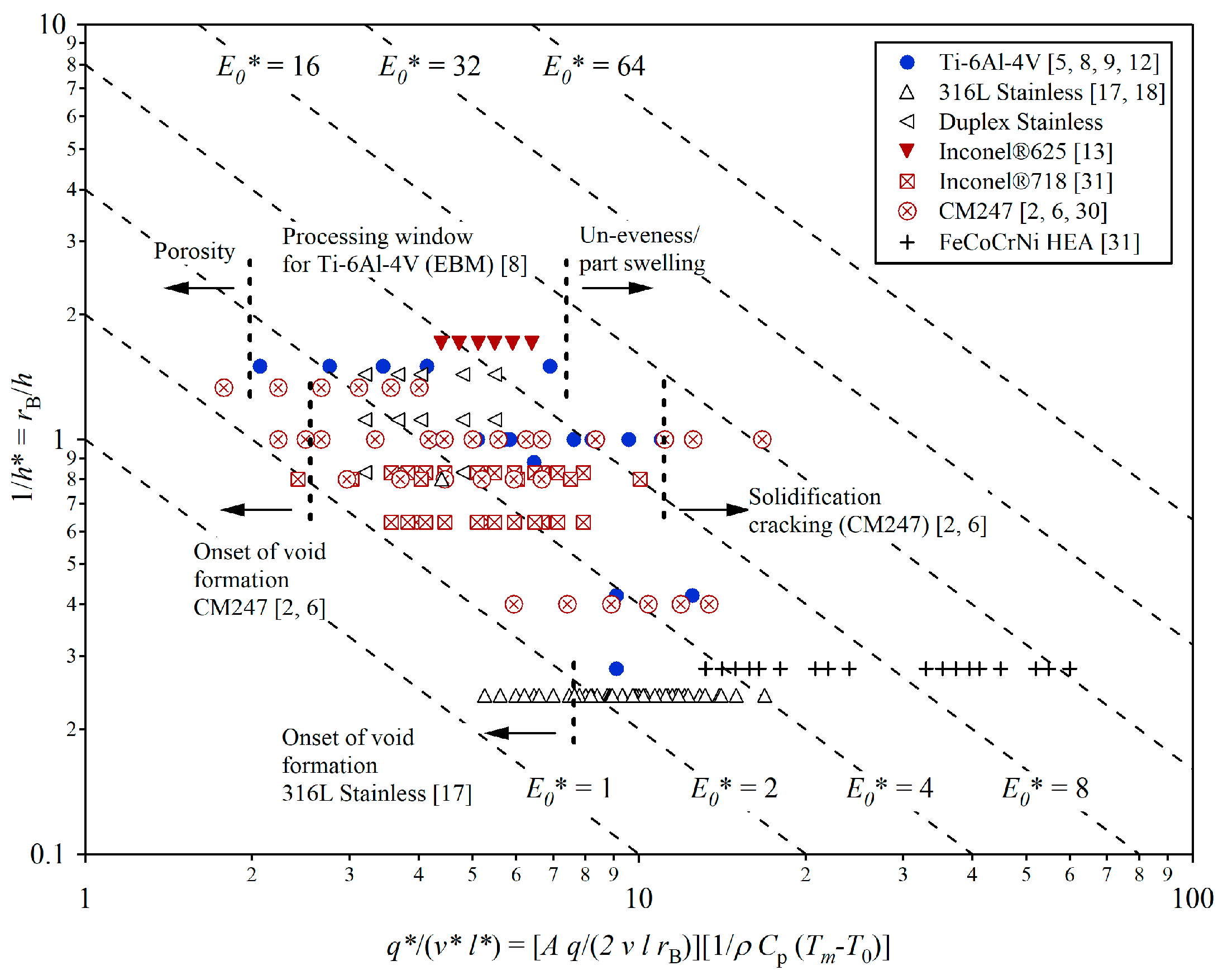

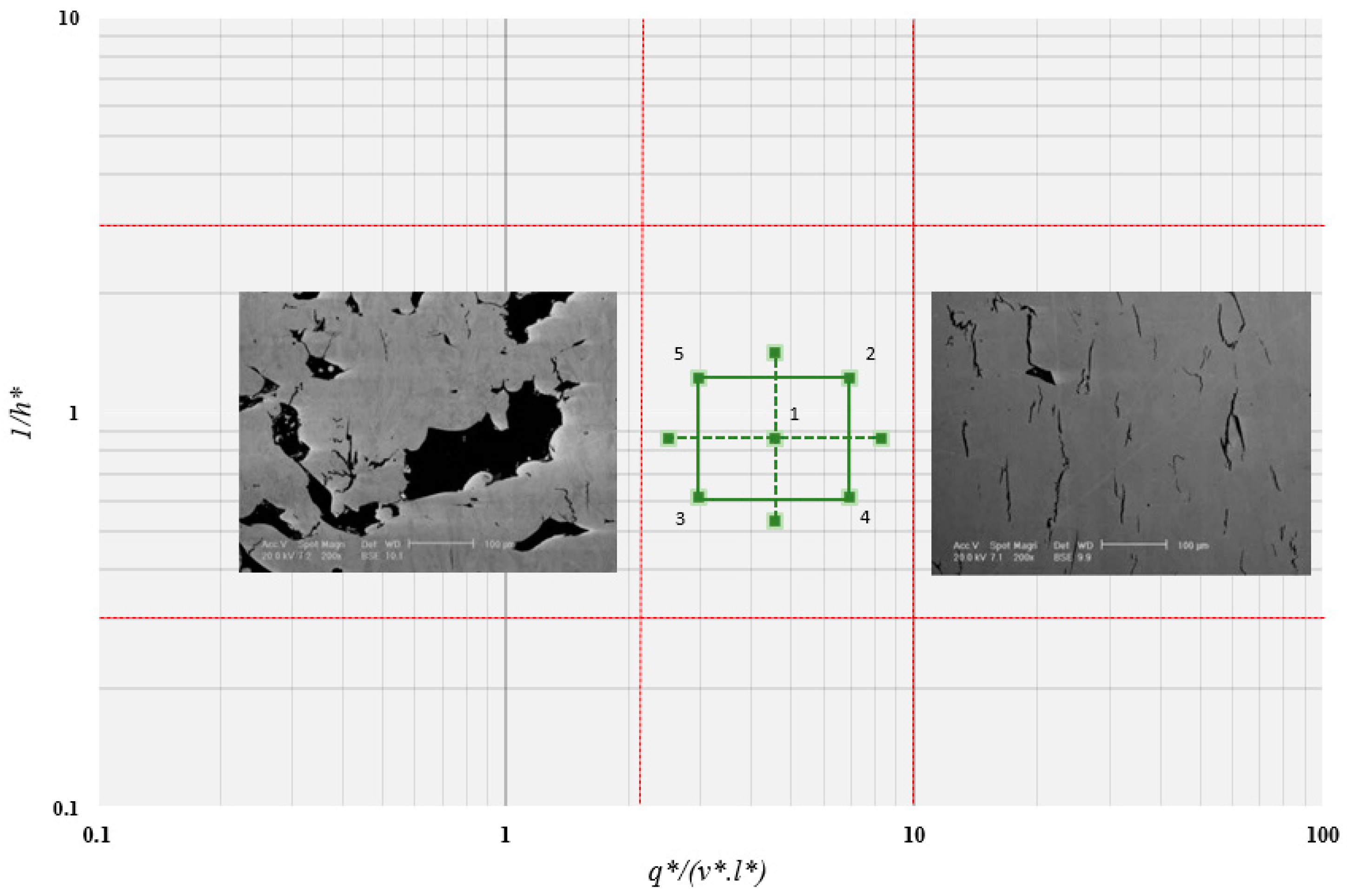
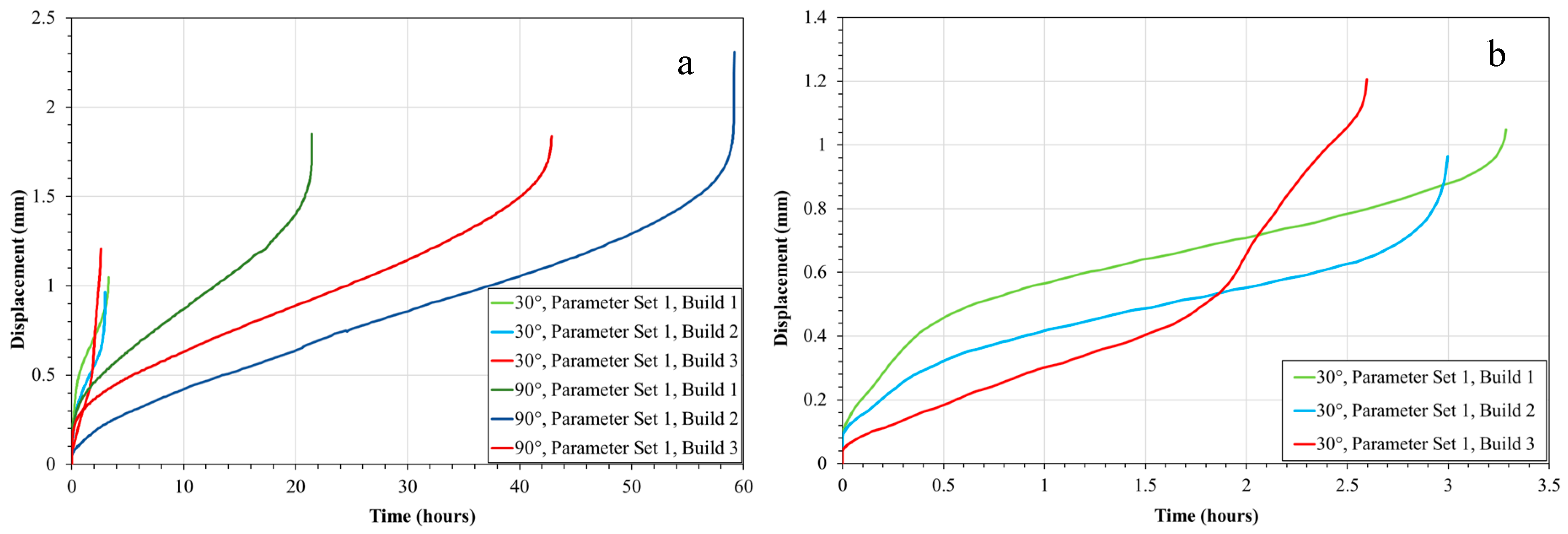
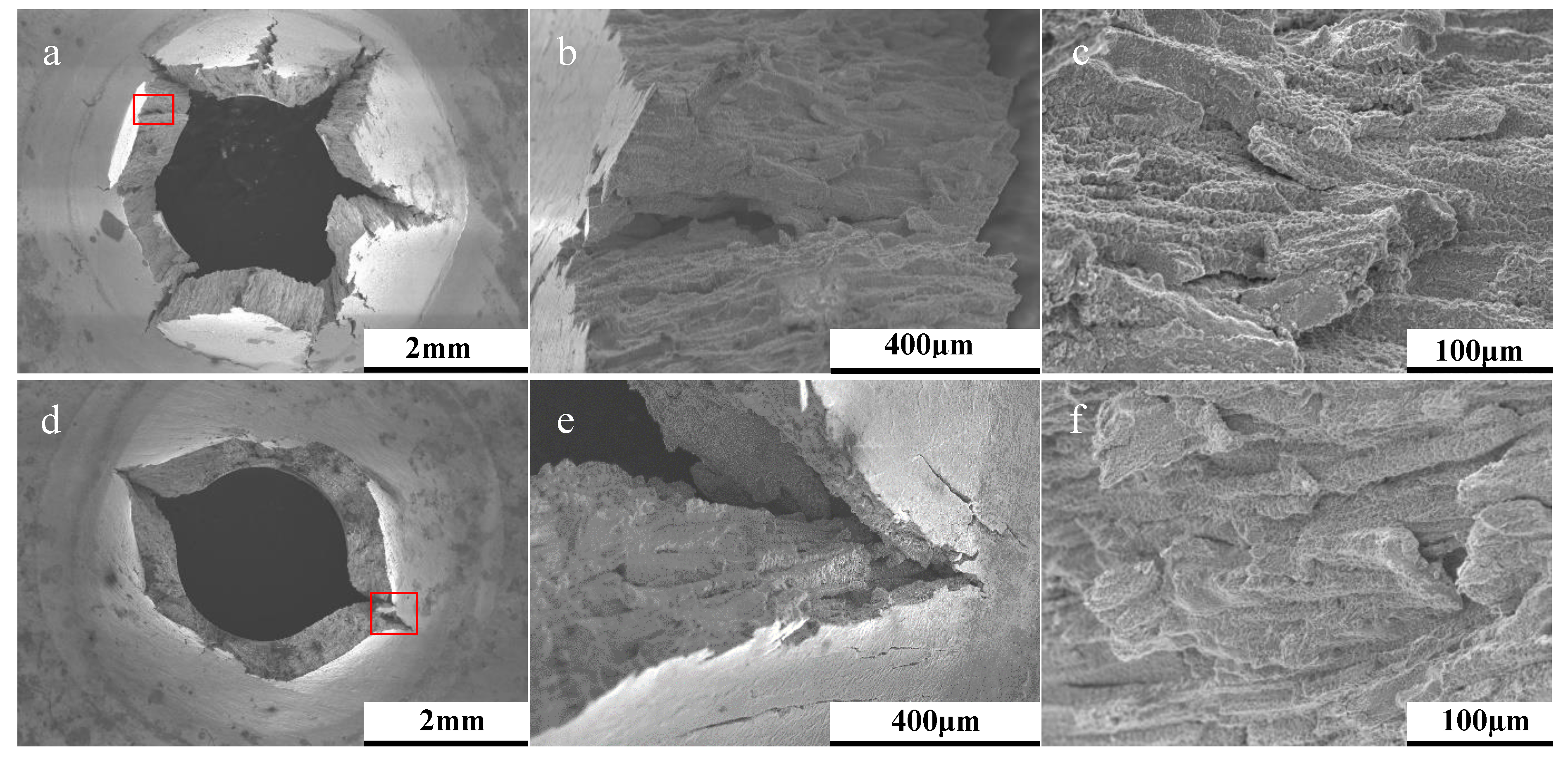

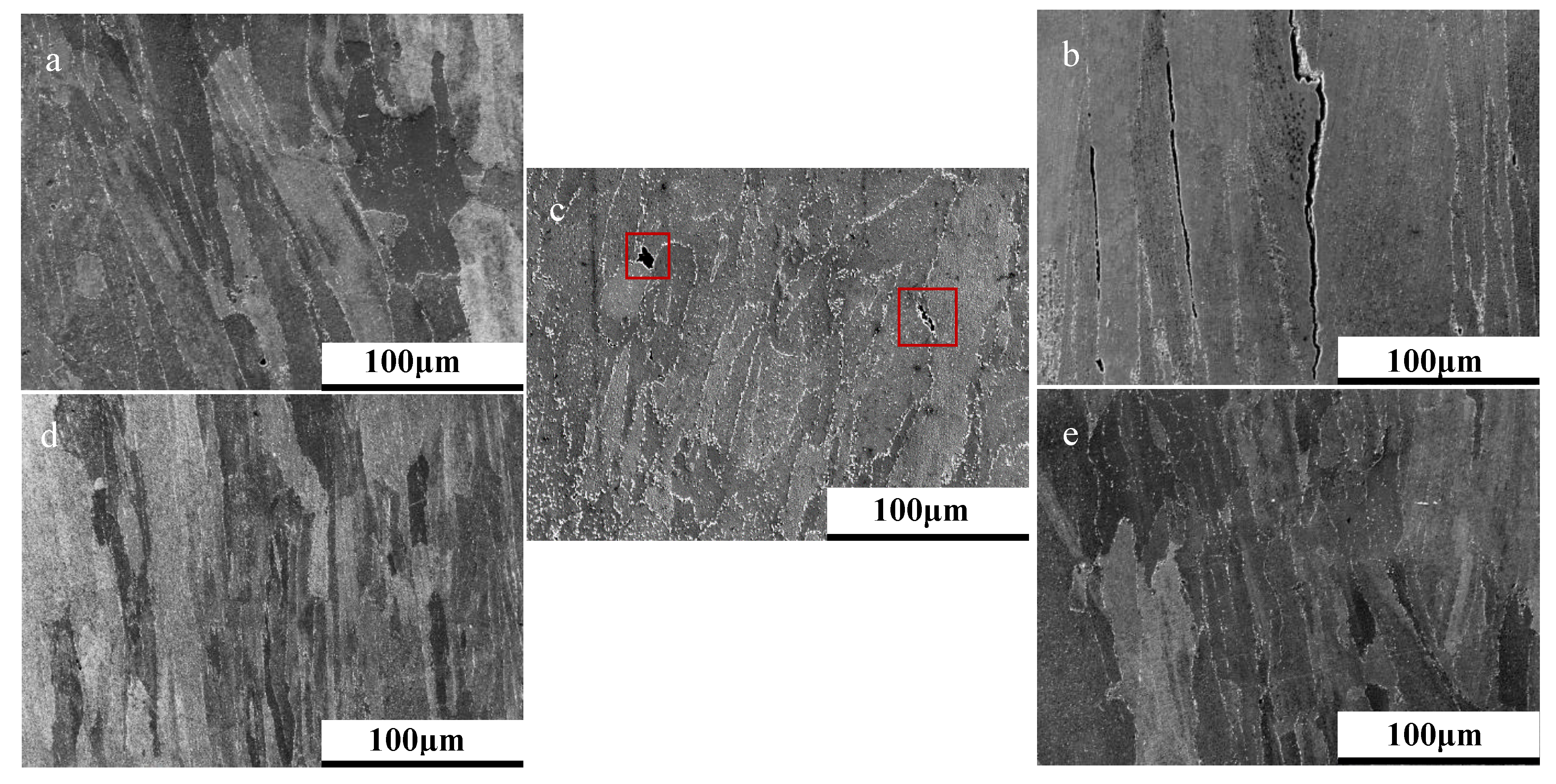



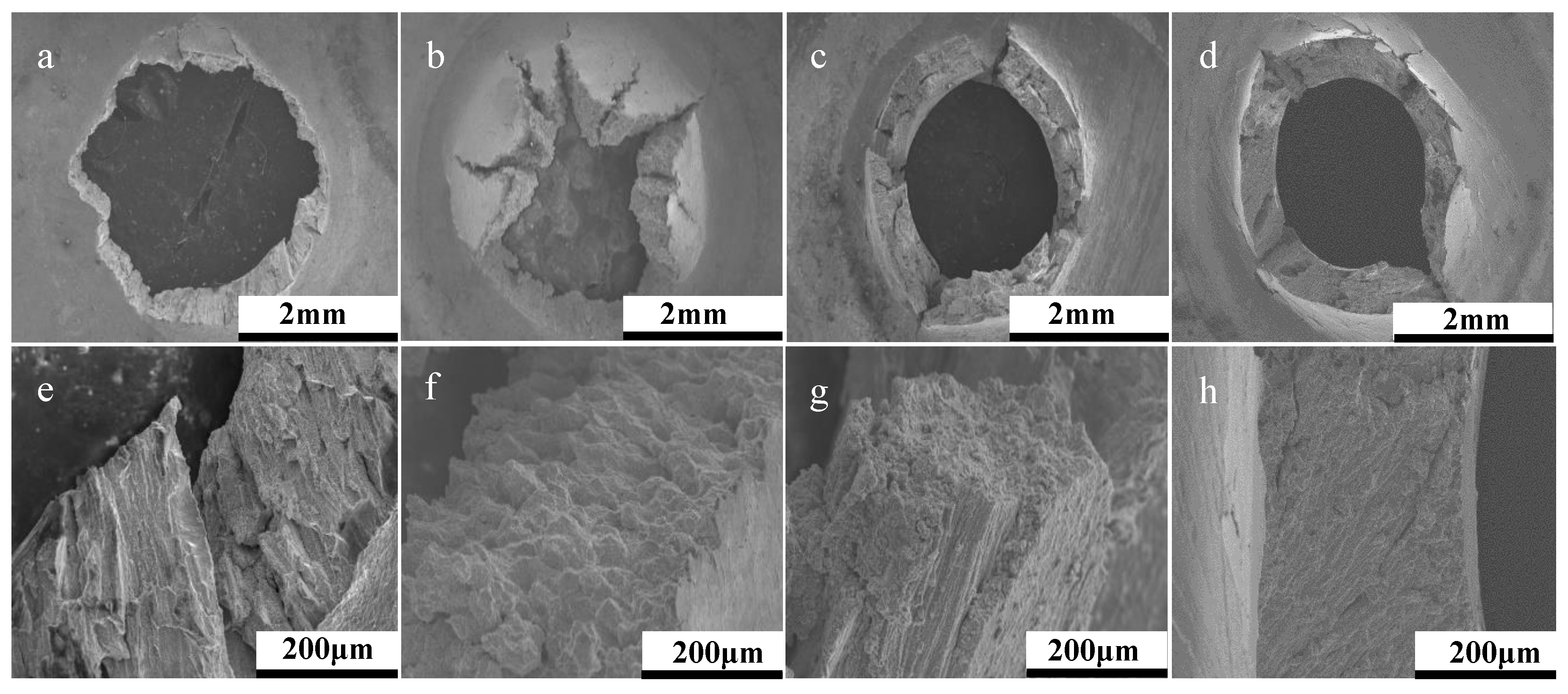
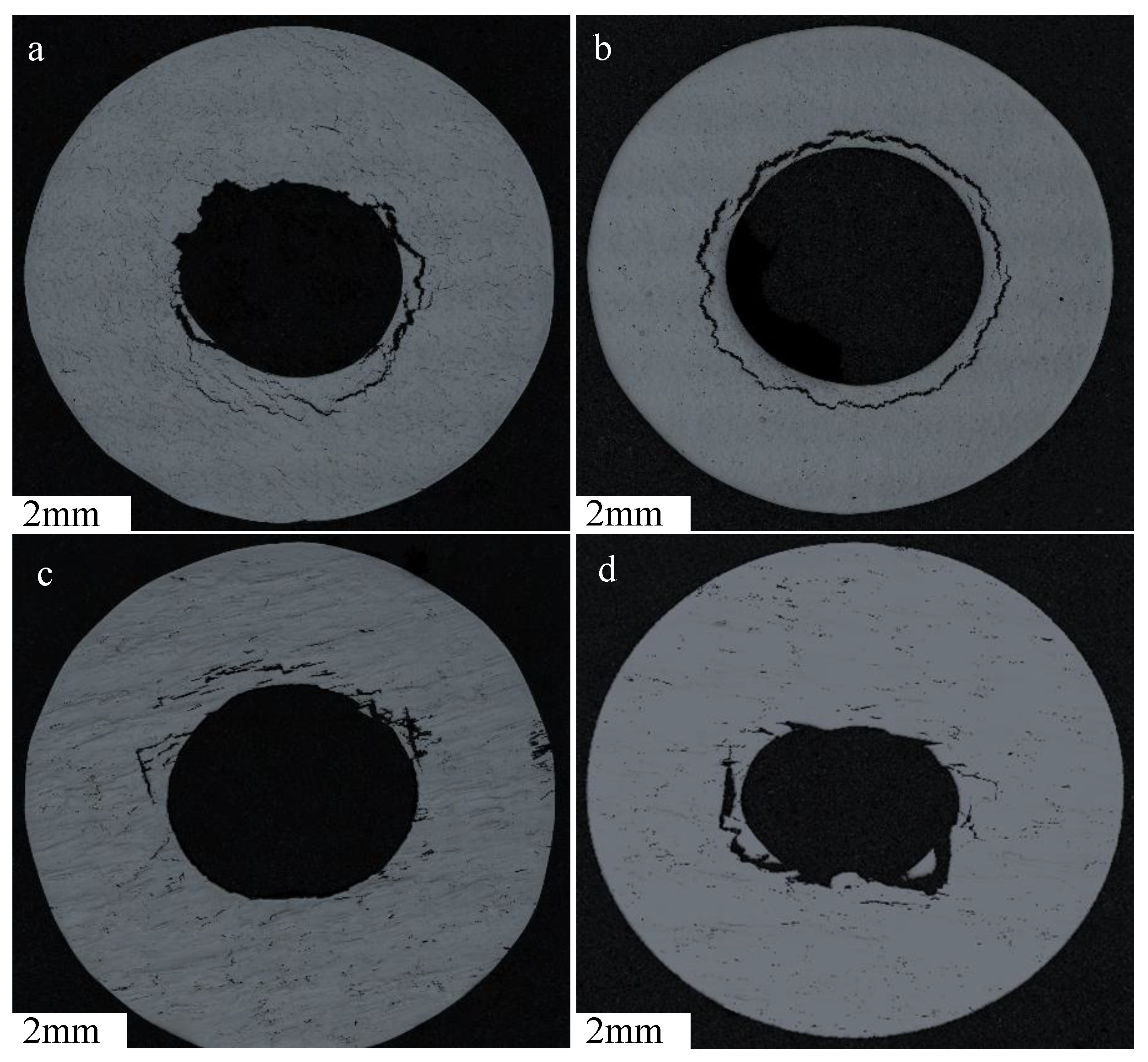
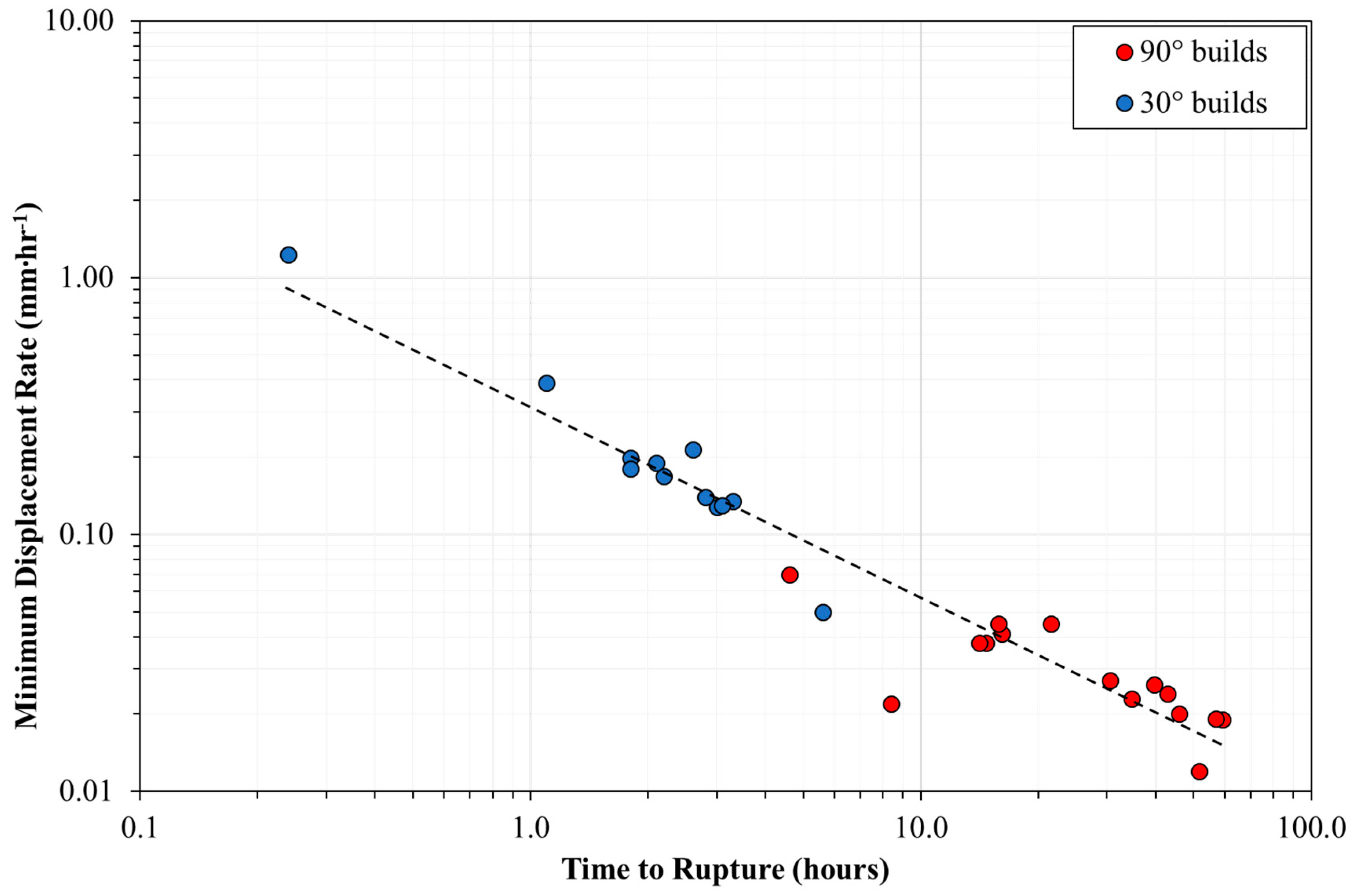
| Notation | Process Variables & Material Properties | Units | Notation | Process Variables & Material Properties | Units |
|---|---|---|---|---|---|
| A | Surface Absorptivity | - | q* | Normalised Power | - |
| Cp | Specific Heat Capacity | J kg−1 K−1 | rB | Beam Radius | M |
| E0* | Normalised Energy Density | - | Tm | Melting Temperature | K |
| h | Hatch Spacing | m | T0 | Initial Powder Bed Temperature | K |
| h* | Normalised Hatch Spacing | - | v | Beam Velocity | ms−1 |
| ρ | Density | kg m−3 | V* | Normalised Beam Velocity | - |
| q | Power | W |
| C | Cr | Ni | Co | Mo | W | Ta |
| 0.07 | 8 | Bal. | 9 | 0.5 | 10 | 3.2 |
| Ti | Al | B | Zr | Hf | Si | S |
| 0.7 | 5.6 | 0.015 | 0.01 | 1.4 | 0.03 | 15 ppm |
| DOE Parameter Set | q*/(v*·l*) | 1/h* | E* |
|---|---|---|---|
| 1 | Medium | Medium | Medium |
| 2 | High | High | High |
| 3 | Low | Low | Low |
| 4 | High | Low | Medium |
| 5 | Low | High | Medium |
| Sample ID | Average Grain Area (μm2) | Average Grain Aspect Ratio | Average Grain Diameter (µm) | Number of Grains Analysed |
|---|---|---|---|---|
| 30°, Parameter Set 1, HT | 175 | 1.90 | 9.9 | 1334 |
| 90°, Parameter Set 1, HT | 863 | 3.79 | 20.4 | 378 |
| 90°, Parameter Set 2, HT | 811 | 3.67 | 13.0 | 477 |
| 90°, Parameter Set 2, AB | 1278 | 3.69 | 21.5 | 284 |
| 90°, Parameter Set 3, HT | 1024 | 2.98 | 19.7 | 311 |
| 90°, Parameter Set 4, HT | 964 | 3.43 | 20.1 | 337 |
| 90°, Parameter Set 5, HT | 1129 | 2.74 | 21.4 | 299 |
| Sample | Microcracking (% Area) | Porosity (% Area) |
|---|---|---|
| 30°, Parameter Set 2, AB | 1.70 | 0.51 |
| 30°, Parameter Set 2, HT | 0.31 | 0.50 |
| 90°, Parameter Set 2, AB | 1.00 | 0.35 |
| 90°, Parameter Set 2, HT | 1.67 | 0.33 |
© 2019 by the authors. Licensee MDPI, Basel, Switzerland. This article is an open access article distributed under the terms and conditions of the Creative Commons Attribution (CC BY) license (http://creativecommons.org/licenses/by/4.0/).
Share and Cite
Hilal, H.; Lancaster, R.; Jeffs, S.; Boswell, J.; Stapleton, D.; Baxter, G. The Influence of Process Parameters and Build Orientation on the Creep Behaviour of a Laser Powder Bed Fused Ni-based Superalloy for Aerospace Applications. Materials 2019, 12, 1390. https://doi.org/10.3390/ma12091390
Hilal H, Lancaster R, Jeffs S, Boswell J, Stapleton D, Baxter G. The Influence of Process Parameters and Build Orientation on the Creep Behaviour of a Laser Powder Bed Fused Ni-based Superalloy for Aerospace Applications. Materials. 2019; 12(9):1390. https://doi.org/10.3390/ma12091390
Chicago/Turabian StyleHilal, Hani, Robert Lancaster, Spencer Jeffs, John Boswell, David Stapleton, and Gavin Baxter. 2019. "The Influence of Process Parameters and Build Orientation on the Creep Behaviour of a Laser Powder Bed Fused Ni-based Superalloy for Aerospace Applications" Materials 12, no. 9: 1390. https://doi.org/10.3390/ma12091390
APA StyleHilal, H., Lancaster, R., Jeffs, S., Boswell, J., Stapleton, D., & Baxter, G. (2019). The Influence of Process Parameters and Build Orientation on the Creep Behaviour of a Laser Powder Bed Fused Ni-based Superalloy for Aerospace Applications. Materials, 12(9), 1390. https://doi.org/10.3390/ma12091390






